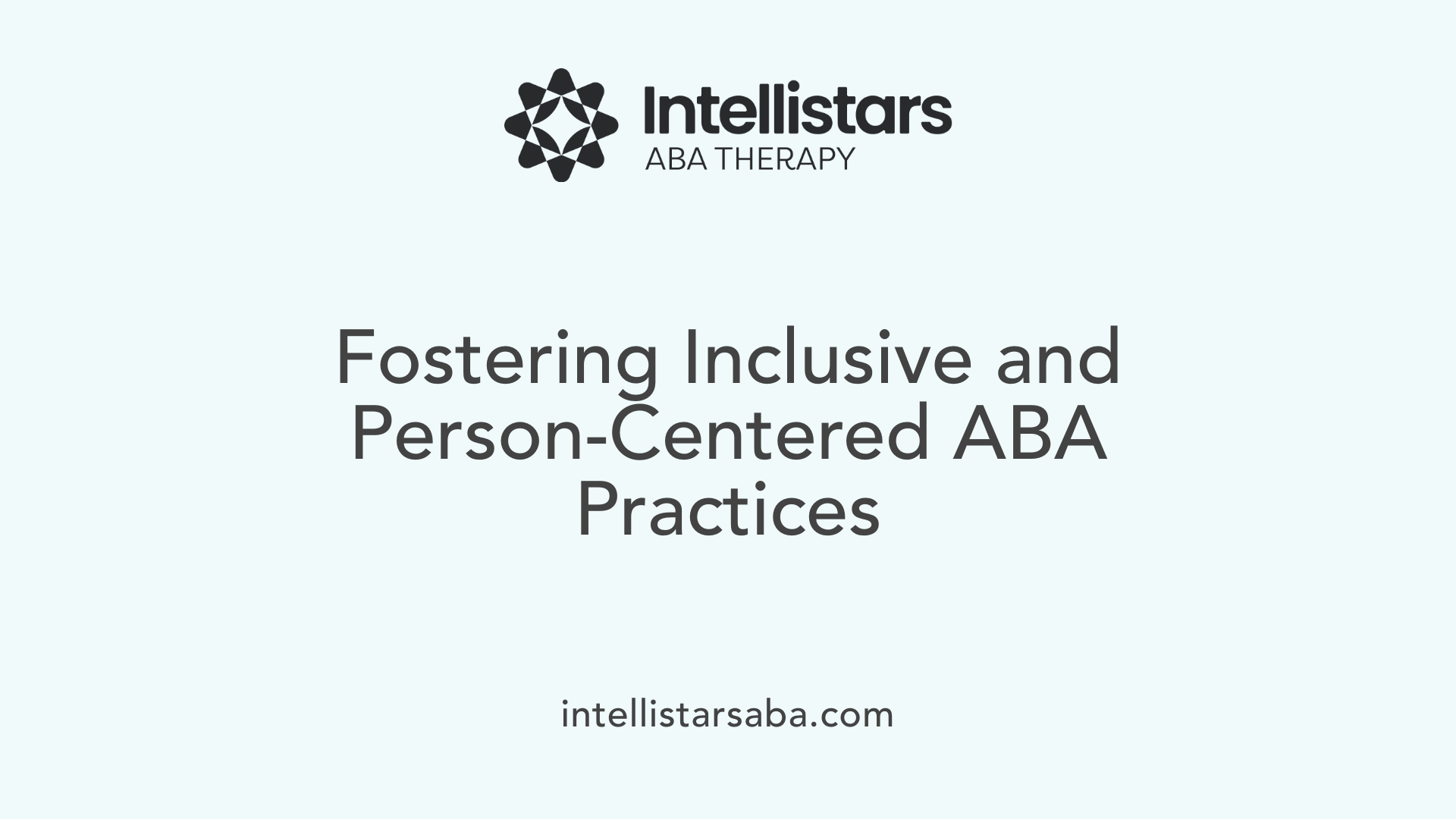Understanding the Transformative Potential of ABA Therapy
Applied Behavior Analysis (ABA) therapy has evolved significantly from its early focus on behavior compliance to a more nuanced, person-centered approach that champions self-advocacy among older children with autism. This therapy, grounded in scientific principles, now emphasizes the development of communication, decision-making, and autonomy, providing a pathway for neurodivergent children to confidently express their needs and rights. This article explores how ABA can be utilized effectively to teach self-advocacy skills, detailing the therapy’s methods, key techniques, professional qualifications, and the profound emotional and social impact on children and their families.
What is ABA Therapy and How Does It Support Autism?

What is applied behavior analysis (ABA) therapy, and how does it help individuals with autism?
Applied Behavior Analysis (ABA) therapy is a scientifically supported approach that focuses on understanding and modifying behavior through structured, data-driven interventions. At its core, ABA uses the principles of learning and behavior to teach essential skills and reduce maladaptive actions in individuals with autism.
ABA therapy involves techniques such as positive reinforcement, where desired behaviors are rewarded with praise, tokens, or other motivators to encourage repetition. The approach follows the "A-B-C" model—antecedent, behavior, and consequence—to analyze and influence behaviors effectively.
Delivered by trained professionals like Board Certified Behavior Analysts (BCBAs), ABA programs are highly individualized. They incorporate various methods including Discrete Trial Training, Pivotal Response Treatment, and naturalistic teaching strategies, all tailored to each child's strengths, needs, and communication styles.
What are the common goals of ABA therapy?
The primary goals of ABA include improving communication skills, enhancing social interactions, promoting independence in everyday tasks, and reducing problematic behaviors. Communication improvements may involve teaching alternative methods such as gestures, sign language, or Picture Exchange Communication Systems (PECS). Social skills development often includes teaching structured behaviors like greetings, turn-taking, and peer interactions through role-playing.
Independence is cultivated by teaching self-care routines such as brushing teeth or tying shoes, which boost confidence and reduce dependence on caregivers. ABA also employs Functional Communication Training (FCT) and mand training techniques to help children express wants and needs effectively, often turning challenging behaviors into opportunities for communication.
Why is individualized therapy and evidence of effectiveness important?
ABA therapy is tailored to each child's unique profile, considering communication abilities, sensory sensitivities, and behavioral challenges. Continuous monitoring by certified specialists ensures that treatment plans evolve based on progress and changing needs.
Research shows that early and consistent ABA intervention leads to improved learning, communication, self-regulation, and social skills. It also fosters emotional benefits by strengthening family bonds and empowering parents with effective strategies.
Overall, ABA therapy equips children with autism to participate more fully in daily life, cultivating independence and self-advocacy skills essential for lifelong success.
ABA Therapy Providers and Their Expertise
Who provides ABA therapy, and what qualifications do these professionals typically have?
ABA therapy is delivered by a team of trained professionals, each with specific roles and qualifications. The primary providers include Board Certified Behavior Analysts (BCBAs), Board Certified Assistant Behavior Analysts (BCaBAs), and Registered Behavior Technicians (RBTs).
BCBAs hold a master's or doctoral degree in behavior analysis or related fields and are responsible for designing, supervising, and monitoring individualized treatment programs. They ensure that therapy is based on data-driven, evidence-based behavioral principles tailored to the unique needs of the child.
BCaBAs serve as assistant analysts who help implement programs under BCBA supervision, providing an additional layer of expert support.
RBTs are trained paraprofessionals who implement the day-to-day interventions as prescribed by their supervisors. They have undergone rigorous training and certification to carry out ABA techniques effectively and compassionately.
What is the role of supervision and collaboration in treatment delivery?
Regular supervision by certified behavior analysts is vital to the success of ABA therapy. BCBAs continuously monitor progress, collect data, and make necessary adjustments to the treatment plan. They collaborate closely with families, RBTs, and other professionals to maintain consistency and ensure the therapy aligns with the child’s evolving needs.
This collaborative approach ensures that interventions remain ethical, person-centered, and effective, promoting positive outcomes such as improved communication and independence.
Why are certification and specialized training important?
Certification from accredited bodies like the Behavior Analyst Certification Board (BACB) guarantees that providers have met rigorous educational standards and adhere to ethical guidelines. Specialized training ensures that ABA professionals are skilled in applying therapeutic techniques that respect neurodiversity, emphasize self-advocacy, and are responsive to each child’s unique profile.
This expertise is essential for delivering quality care that supports not only behavioral improvements but also emotional well-being and empowerment for children and their families.
Core Techniques and Components in ABA Therapy for Autism
What are the typical components and techniques used in ABA therapy for autism?
Applied Behavior Analysis (ABA) therapy employs a variety of structured techniques to support children with autism in developing important skills. One foundational method is Discrete Trial Training (DTT). This approach involves breaking down skills into small, manageable steps and teaching them through repetitive and structured practice. For example, a child might be taught to identify colors or follow simple instructions through a series of trials with immediate feedback.
Another important technique is Natural Environment Teaching (NET), which integrates learning into daily routines, play, and community activities. NET helps generalize skills by embedding learning in natural settings rather than just clinical sessions. For instance, communication skills may be practiced during playtime or meal preparation.
Task Analysis further refines this approach by breaking complex activities into sequential parts, making them easier to master step by step. Teaching children how to complete hygiene routines or tie their shoes often relies on this technique.
How are positive reinforcement, prompting, fading, and modeling used?
Positive reinforcement stands at the heart of ABA therapy. Desired behaviors are encouraged by immediately providing rewards such as praise, tokens, or preferred items. This encourages repetition of those behaviors.
Prompting helps guide the child toward the correct response, such as verbal cues or physical guidance. Over time, these prompts are gradually removed through fading to promote independence. Modeling, where the therapist or caregiver demonstrates a behavior, also supports learning by providing a clear example for the child to imitate.
How is individualization and continuous monitoring maintained?
ABA programs begin with thorough behavior assessments. These assessments help develop individualized treatment plans tailored to each child’s unique strengths, needs, and preferences. Plans focus on goals like improving communication, social skills, or independence.
Continuous data collection and analysis by certified behavior analysts (BCBAs) ensure that interventions remain effective. Treatment plans are adjusted as progress is tracked over time to meet evolving needs and maximize outcomes.
This combination of evidence-based techniques, positive reinforcement strategies, and meticulous monitoring forms the backbone of ABA therapy, enabling many children with autism to thrive in a variety of settings.
Monitoring and Measuring Progress in ABA
How is the progress of an individual undergoing ABA therapy assessed?
Progress in ABA therapy is evaluated through continuous and systematic data collection on targeted behaviors and skills. Common data collection methods include frequency counts, duration recording, and Antecedent-Behavior-Consequence (ABC) data. These tools help therapists track how often a behavior occurs, the length of a behavior, and what triggers or follows it.
Role of the BCBA in progress supervision
A Board-Certified Behavior Analyst (BCBA) plays a crucial role in supervising ABA therapy. The BCBA oversees data collection, analyzes results, and ensures that treatment plans are tailored to the individual's needs. Their expertise ensures that therapy remains effective and adjustments can be made based on the data collected.
Importance of ongoing evaluation and collaboration with families
Ongoing evaluation is vital to track improvements in communication, social interactions, adaptive skills, and reduction of challenging behaviors. Collaboration with families and caregivers enriches this process by providing additional observations and feedback. This teamwork offers a well-rounded picture of progress, allowing therapists to fine-tune interventions to better support the child’s development.
| Aspect | Method | Description |
|---|---|---|
| Data Collection | Frequency counts, ABC data | Tracks behavior frequency, triggers, and consequences |
| Professional Supervision | BCBA oversight | Ensures individualized, effective treatment |
| Family Involvement | Parental reports, collaboration | Adds observational insights and supports therapy decisions |
This comprehensive monitoring approach supports consistent progress and tailored interventions in ABA therapy.
Addressing Misconceptions About ABA Therapy
What are some common misconceptions about ABA therapy for autism?
ABA therapy often faces misunderstandings that misrepresent its true nature. One widespread myth is that ABA is rigid and overly repetitive. Contrary to this, modern ABA therapy is tailored to each child’s unique needs. It uses flexible, natural teaching methods integrated into play and daily routines, making learning both engaging and relevant.
Another misconception is that ABA relies on punishment or force to make children comply. In fact, ABA focuses primarily on positive reinforcement, praising and rewarding efforts to encourage desirable behaviors. This nurturing approach helps children develop communication and social skills in a supportive environment.
Some also mistakenly believe ABA aims to "cure" autism. Instead, ABA’s goal is to improve life quality by enhancing communication, independence, and social abilities. It respects neurodiversity and seeks to empower individuals, helping them express themselves and advocate for their needs.
By dispelling these myths, we can better understand ABA as an evolving, person-centered method grounded in science and compassion, prioritizing collaboration with families to support each child’s growth and well-being.
Mand Training and Functional Communication in ABA
What is Mand Training and How Does It Teach Expression of Wants and Needs?
Mand training is a fundamental technique in ABA therapy focused on teaching children with autism how to express their wants and needs effectively. This method involves skills such as recognizing personal desires, utilizing alternative communication methods like gestures or PECS, prompting, gradually fading these prompts, and reinforcing successful communication. By mastering mand training, children gain a vital tool for expressing themselves, reducing frustration and increasing independence.
How Does Functional Communication Training Replace Challenging Behaviors?
Functional Communication Training (FCT) is an instrumental component of ABA that aims to replace maladaptive behaviors, such as tantrums, with appropriate communication strategies. FCT encourages children to use different communication forms—such as sign language or picture exchange systems—to express their needs. This approach teaches alternative behaviors to meet communication needs, effectively decreasing challenging actions by providing suitable outlets for expression.
How Can Communication Skills Be Integrated Daily During Routine Activities?
Incorporating mand training and functional communication techniques into daily activities maximizes their effectiveness. Everyday routines such as meals, playtime, hygiene, transitions, and community outings offer natural opportunities to practice communication skills. For example, during mealtimes, a child might use a picture card to request food, while during play, they can be prompted to express preferences or needs. This consistent, practical application fosters stronger communication abilities and supports generalization across environments, helping children become more independent and confident communicators.
Teaching Self-Advocacy: Moving Beyond Compliance
From Compliance to Client-Centered Advocacy
Traditional ABA therapy often emphasized compliance, prioritizing obedience and behavior control. However, modern approaches advocate for shifting toward client-centered advocacy, focusing on uplifting the identities of neurodivergent individuals rather than suppressing their voices. This transition encourages respect for clients' autonomy by fostering skills that enable them to speak up and make choices about their own lives.
Building Self-Awareness and Understanding of Rights
A fundamental step in teaching self-advocacy is helping clients develop self-awareness. This involves knowing one’s strengths, preferences, and boundaries, as well as understanding personal rights. When clients recognize their own feelings and needs, they become better prepared to communicate them effectively. Embedding this knowledge into therapy supports clients in confidently expressing their wants and advocating for themselves during daily interactions and decisions.
Validating Diverse Communication Methods and Authentic Expression
ABA therapy now emphasizes recognizing and validating various forms of communication beyond spoken language. Gestures, body language, use of PECS, sign language, art, and speech-generating devices are all essential avenues for authentic self-expression. Encouraging clients to utilize their preferred communication style empowers them to express themselves genuinely. Reinforcement strategies focus on celebrating effort, bravery, and honesty rather than mere compliance, fostering an environment where clients feel safe to be themselves.
Teaching self-advocacy in ABA not only promotes independence but also nurtures confidence and emotional well-being by respecting each person’s unique voice and needs.
Integrating Self-Advocacy Skills into Everyday Life
Embedding Advocacy Coaching in Natural Environments
To effectively cultivate self-advocacy skills, coaching should occur in everyday contexts such as schools and community spaces. These natural settings allow individuals with autism to practice expressing needs and preferences in real-world situations. Providers and educators work collaboratively to support spontaneous use of advocacy skills during regular activities, facilitating meaningful and practical learning.
Using Real-Life Practice Scenarios
Teaching self-advocacy involves incorporating scenarios such as requesting breaks when overwhelmed, expressing discomfort, and setting personal boundaries. These practice opportunities foster confidence and empower children to communicate their needs clearly and respectfully. Practicing these skills in familiar routines like classroom transitions or community outings reinforces their practical value.
Supporting Generalization and Maintenance of Advocacy Skills
For self-advocacy skills to be effective, they must generalize across various settings and be maintained over time. Consistent practice in diverse environments, along with positive reinforcement, helps embed these abilities into daily life. Collaboration with families ensures continued support at home, while therapists track progress and adjust strategies to sustain long-term growth.
These approaches ensure self-advocacy training in ABA not only develops communication but also empowers children with autism to confidently navigate their world and assert their needs with independence.
Family Collaboration and Cultural Shifts in ABA Practices

Guiding Families from Obedience-Based to Expression-Based Support
Families play a crucial role in supporting children undergoing ABA therapy. Modern practices encourage shifting the family mindset from focusing solely on obedience to valuing genuine self-expression. This transition helps nurture the child's independent voice rather than just compliance. Providers work closely with families to model and reinforce communication strategies that uplift the child's identity and encourage authentic interaction.
Emphasizing Neurodiversity-Affirming Approaches
ABA therapy has evolved to integrate neurodiversity-affirming principles, recognizing and respecting the unique experiences and expressions of neurodivergent individuals. Embracing this approach means honoring diverse communication styles, validating self-advocacy efforts, and prioritizing client autonomy. This cultural shift moves away from controlling behaviors toward fostering empowerment and understanding in therapeutic and family settings.
Addressing Challenges to Implementation and Fostering Inclusive Practices
Implementing these cultural shifts is not without challenges. It requires deliberate efforts to change traditional ABA methods that emphasized compliance and control. Overcoming resistance involves educating families and practitioners about the benefits of person-centered, ethical practices. Creating inclusive environments means collaborating with all stakeholders to promote acceptance, consistent support across settings, and flexibility to meet individual needs. This collaborative foundation strengthens the child’s growth and helps embed advocacy skills naturally within daily life.
Emotional and Social Impact of Self-Advocacy Through ABA

How Does Self-Advocacy Boost Confidence and Autonomy in Older Children with Autism?
Self-advocacy teaches children with autism to know themselves, understand their rights, and express their needs confidently. This empowerment fosters greater independence by transforming challenging behaviors into communication opportunities. For example, children learn to request breaks or set personal boundaries, which reduces frustration and increases their sense of control over daily situations.
In What Ways Does ABA Therapy Improve Family Dynamics and Reduce Stress?
ABA therapy not only supports the child but also benefits families emotionally. By improving communication and behavior management, it strengthens family bonds and reduces parental stress. Therapists guide families to shift from demanding obedience to encouraging self-expression and advocacy, creating a more supportive and understanding home environment.
How Is Success Measured Beyond Data Metrics in Self-Advocacy?
Success in teaching self-advocacy isn’t solely about numerical data but involves recognizing meaningful emotional growth and real-life application. Positive emotional impacts, such as increased confidence and autonomy, are considered vital indicators. These successes reflect the child’s ability to navigate social situations, express genuine needs, and experience a greater quality of life.
| Aspect | Impact on Child | Impact on Family | Method of Reinforcement |
|---|---|---|---|
| Confidence & Autonomy | Encourages independent communication | Reduces stress through understanding | Real-life practice and positive reinforcement |
| Family Dynamics | Enhances support and advocacy skills | Strengthens bonds and collaborative care | Family coaching and emotional support |
| Success Measurement | Focuses on emotional growth and agency | Moves beyond data to meaningful moments | Observations of authentic self-expression |
Fostering Autonomy and Respect Through ABA-Facilitated Self-Advocacy
The landscape of ABA therapy has notably transformed, placing self-advocacy skills at the heart of intervention for older children with autism. By prioritizing individualized communication development, encouraging decision-making, and collaborating closely with families, ABA empowers these children to become confident self-advocates. This approach not only enhances their independence and emotional wellbeing but also fosters respectful, neurodiversity-affirming practices within therapy and beyond. Embracing self-advocacy through ABA promises a future where neurodivergent individuals are celebrated for their unique voices, equipped with the skills to express themselves authentically and engage meaningfully with their communities.
References
- Effective ABA Methods for Teaching Communication Skills
- Pathological Demand Avoidance (PDA) and Autism
- 3 Solutions for Teaching Self-Advocacy in ABA to Autistic ...
- Benefits of ABA Therapy for Children with Autism
- Integrating ABA Therapy in Schools: Strategies for Success
- 10 Common Misconceptions About ABA
- Debunking 7 Common Myths About ABA Therapy - GSEP Blog
- 8 Common Myths About ABA Therapy Debunked
- 7 Myths About Applied Behavior Analysis






